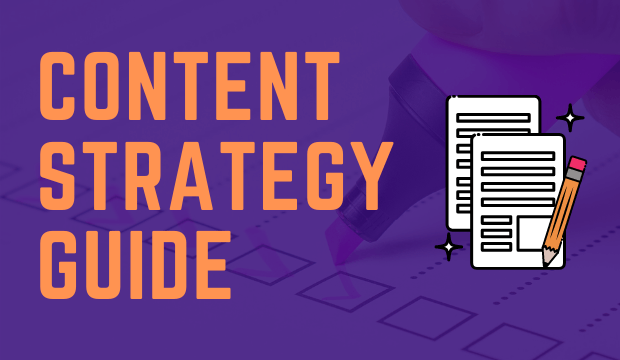As a content creator, everyone creates content.
But, very few have a well-planned strategy for creating content that means most of them start producing content without having a documented plan.
But it’s not new.
The study of CMI shows that about 56% of B2B marketers don’t even have a documented content strategy.
That’s why it becomes hard to track your content marketing progress and eliminate the project that does not show any positive results.
So what’s exactly a content strategy?
Here’s the definition from HubSpot.

In my words, content strategy is a process of developing and organizing your content and eliminating the less-effective content.
So, how does it help you with your content marketing plan?
It’s super important if you consider the long term game. You just can’t create content without measuring its effectiveness.
Even if you do so, you won’t be able to eliminate the content project that does not bring enough results for your business.
Whether you create content for yourself or have a content creation team, the documented strategy will let you know about the following:
- The current state of content performance.
- What to produce next?
- When and what content to promote?
- What’s currently working?
- What’s getting more traction?
And pretty much everything that deals with the content.
In this article, we’ll be building a content strategy from scratch
Even if you’re a freelancer or you deal with clients, this guide is also helpful.
Let’s jump to the first step of content strategy.
Please take a pen and paper or notepad to create your content strategy right now.
Though I will provide you the template that you can use for your purpose, I recommend you start right now with a pen and paper.
Click Here & DOWNLOAD YOUR FREE CONTENT STRATEGY TEMPLATE
That way, you’ll have an overview of your content strategy at the end of this article.
objectives

The fact is that the process of creating a content strategy doesn’t start with content itself.
It’s goal and content marketing objectives that will decide your next move.
Defining your marketing goal and objectives are directly not related to your content.
But still, you cannot start with the content strategy without knowing the end goal.
Here’s an example that illustrates the above statement.
You may create great pieces of content that get lots of shares and links. And, even your traffic is getting higher and higher.
That is the perfect scenario for any business. Right?
Not so.
There’s a difference between looking good and doing good.
The numbers, such as social shares, links, and even monthly traffic to your site, may look pleasant and satisfying to you.
But, is that all that a business needs.
Depending upon the industry, the end goals for most of the businesses are Lead generation, sales, customer retention, and few others.
That means your content marketing plan can only be called as successful when it can deliver the end goals.
If you’re getting millions of page views, but hardly a few hundred people are buying from them, these numbers do nothing but satisfy your ego.
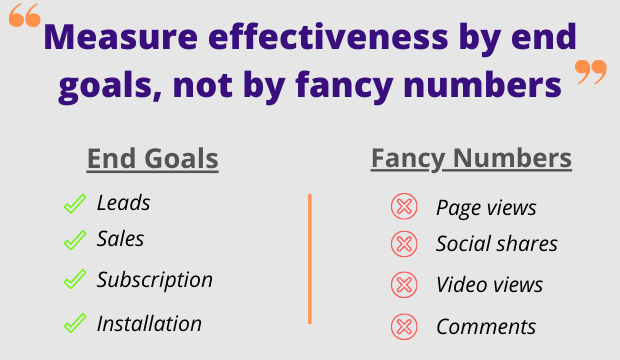
That’s why having a marketing goal, and objective will help you stay focused on your end goal.
Also, you’ll focus on the content that only adds some business value.
So, let’s start with building the foundation of your content strategy.
First, let’s decide on the business objective.
The possible business objectives are the following.
- Lead generation
- Increasing sales
- Building Awareness for your product or service
- PR
- Thought leadership
If you’re not sure about the end goal you want to achieve, then read the following guide that will help you decide your objectives.
Lead generation
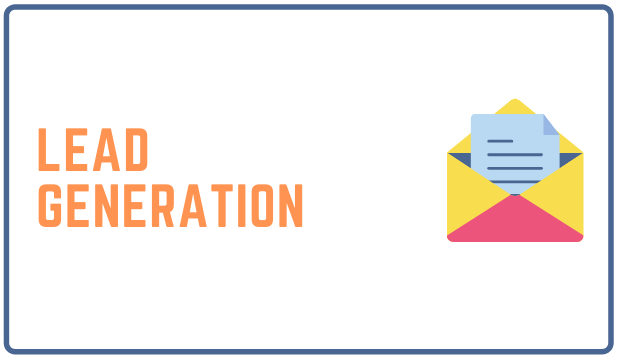
Lead generation is most common when the product is complex in structure.
For example, a soap company won’t try to capture potential customers’ emails to sell the product.
It’s Because the product is not that complex that requires to lead generation and nurturing the leads to generate sales.
Again, if you’re familiar with the real estate industry, you’ll know the lead generation’s role.
In the case of buying a property in real estate, nobody just buys after watching the advertising.
Here, educating prospects plays a crucial role.
Is lead generation a good fit for your business objective?
If you’re dealing with any complex type of product, then lead generation is probably a good option.
Sales
Generally, focusing on sales seems to be a good fit when the business has built the foundation already.
Brand awareness and lead generation are a few of the critical parts of building the foundation.
You just cannot expect sales just after launching your business.
Therefore understanding the current state of business is necessary before defining the objectives.
Is sales a good fit (currently) for your business objective?
It depends on the business type. If you already have worked on brand awareness and educating the prospects about your product or service, then sales could be the possible objective right now.
You can integrate sales with lead generation as well. Both are primarily related to each other.
Awareness
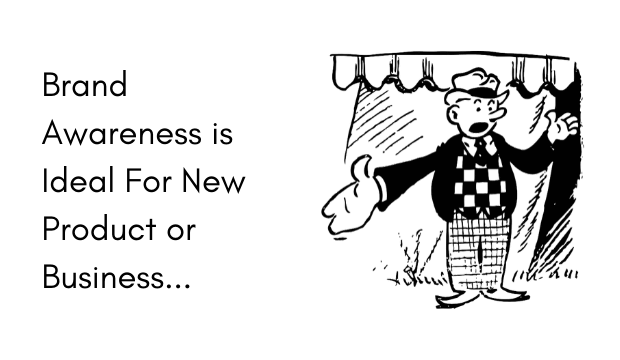
Awareness should be the primary focus when the product or service is new to the market.
For example,
If tomorrow a new Marketing automation software launches, then the first task should be to tell people about the product, its benefits, and its features.
No one is going to buy if they don’t know about the product.
The same happens with the service-based business as well.
Is awareness a good fit for your business objective?
Understand what you want to achieve. Also, look at the product or service that you’re going to provide.
If there’s any need to educate your prospects about your service, the considering awareness could be a good fit for your marketing objectives.
Thought leadership
That is the case when you’re looking for building a personal brand.
There could be various reasons, like getting recognition, respect, and name, to focus on building your personal brand.
In this case, the content strategy may vary because of the nature of the objectives.
In case of building your brand, you necessarily don’t need to promote your product or service.
Instead, you’ll focus on the authority of your personal brand.
[I will also show the content ideas that you can adopt for building personal brand]
Is Thought leadership a good fit for your business objective?
If you’re more concerned about your personal image than your service or product, this could be your choice.
PR
Content marketing is a pretty amazing tool that you can use to build a positive image for your product or even brands.
The idea is to get a clear idea of what you want to achieve with content marketing.
The clearer the idea you have about your objectives, the easier it will be to create relevant content for your target audience.
And, the more relevant content you produce, the more engagement you’re likely to receive.
So, take a few minutes and write down the objectives that you want to achieve with content marketing.
And, my recommendation to you is to consider anyone’s business objective.
You can move one to another. Just stick to one at one point.
Once you decide the objectives, you need to focus on the goal as well.
Setting Goals
The objectives will help you give a direction, whereas the target goals will show you the progress.
In this stage, you have to decide what metrics do you want to achieve.
For example, if your primary objective is to generate leads, give it a specific number and a timeline.
It might be like this.
“I want to generate 500 leads within three months”.
There are a few things that you need to remember.
Never set a goal that is an unrealistic goal that is next to impossible to achieve.
The obvious question is, how do I know that?
Reverse engineering could be the answer.
Let’s assume you want to get 500 leads by three months. So if you’re only going to leverage blog articles to generate leads, you need to have at least 16,667 visitors.
I am assuming the conversion rate of 3%. That means out of every 100 visitors, only three will give their email Ids to you. Hence you need at least 16,667 numbers of visitors to get 500 leads.
[The math behind the above numbers➜ {16,667 x 3/100} = 500 leads]
And getting more 15k visitors could be hard if you’re just starting your blog, and you’ll only rely on organic way of lead generation from the blog.
The goal should be a specific number. Also, add a timeframe to it to make it to precise.
Other possible goals could be like this.
- Increasing ROI by 5% by three months.
- Increasing subscribers list by 10,000 by six months.
- And so on.
So, until now, you’re ready with the foundation for your content strategy.
Let’s move forward to the next step: a series of questions that you need to answer to have a clear and precise vision.
Questions to ask for better content planning
The questions are essential to answer to prepare a complete content strategy. To get the most out of this article, just start writing down the answers to each of them.
- Who will be reading your content?
- What problem will you solve through your content?
- Which content format are you going to choose?
That simply implies the customer persona. You need to understand your customers more than they know themselves.
Here’s a complete guide on understanding your customers.
After all, you’re going to communicate with your potential customers and that too without saying a word.
That’s why you need to understand their pain points, need, demand, and more.
To make your job easier, I have prepared a template that you can use to create an accurate buyer persona for designing the content strategy.
Now, It’s time to decide the Content format and content distribution channels.
There is no right or wrong content format; all you need to understand is what suits you.
I have already created an in-depth guide to decide the content format for your business.
In short, you need to stick to the content format that you can stick to for a long time.
If you think about creating video content, you must stick to the video format for a long time.
The study shows that content marketing takes at least 12–18 months to start showing results.
So moving from one format to another in a short span, can hurt your growth.
Okay, this was the pre-work that you need to perform before start working on content strategy.
Whether creating a content plan for yourself or your client, just make sure that Marketing objectives and goals are clear.
Again, it is always better to have a documented plan. There are lots of templates out there to organize your content plan.
If you want to just start from now, then you can download the template that I have developed (Just Customize the template as per your need).
Let’s move forward to the content for the buyer’s stages.
Create content as per the buyer’s stage
Every buyer generally goes through three different stages before making a purchase.

These stages are
- Awareness stage (When the buyer is not aware of the problem and is looking for more information about the issue)
- Consideration stage (When the buyer is trying to understand more about the possible solutions or anti-virus software)
- Decision stage (Now the buyer is looking to choose the best product for his/her need)
That means you need to deal with people from three stages.
Here’s another example.
For instance, if someone is dealing with a slow computer (due to a virus attack) might look for possible ways to remove the virus from the device.
In this case, the buyer belongs to the awareness stage because he is unaware of the problem.
Next, the same person might search for a solution or anti-virus that can improve his device’s performance.
Here, the consumer belongs to the consideration stage, as he is looking for the solution.
The third scenario would be that the consumer is looking for the best anti-virus software to buy to save the device.
Anyone reaches the buying stage or the decision stage only after the awareness stage and consideration stage.
How’s, is this related to content strategy?
You can create content based on these three buyer’s stage. That way, you’ll be able to communicate with your prospects.
So your task would be to serve people from each stage to increase the reach.
You can also consider this as a funnel where the top funnel (awareness stage) is basically to attract people who might be your buyers in the future.
Second, the middle of the funnel (Consideration stage)is basically to nurture the lead. And here, you can introduce your product or service as well.
The bottom of the funnel(Decision stage) is more crucial than the other two because, at this stage, people are looking for the product or service to buy.
The bottom of the funnel will give you the maximum conversion rate as well because people are in the buying intent.
Here’s what you need to do.
First, you need to determine the buying stage for your product or service.
The second task is to research about the queries or questions that your target audience have in each of the buyers’ stage.
The types of questions will vary from stage to stage.
For instance, people from the awareness stage will not search for the price of any product because he/she is yet to understand the problem and figure out possible solutions.
Instead, he/she may be interested in knowing the following.
- How to speed-up my computer?
- Why is my computer running so slow?
- Why anti-virus makes the computer slow
Hence your focus must be on the relevant questions or queries (for every buyer’s stages) in your niche.
The best practice will be to make three different rows on an excel sheet for each of the buyer stages to categorize all the questions or topics into these three different sections.
What to do when you offer multiple products or services?
One of the common queries that I have come across is that people get confused while creating content ideas for the buyer’s stage.
It is easy when you’re offering a single kind of product. Because you only have one set of potential buyers.
But what if you offer two or more products/services and the target audience for each of the products is different.
Let me show you an example of the same scenario.
Assume an agency that provides three types of services, such as website designing, social media marketing, and content writing.
Though three services may seem similar if you see these services through the lend of buyers stage, you’ll notice the difference.
Someone who requires a website designing service might not necessarily need a content writing service.
Likewise, someone who wants to hire an agency for social media marketing might not be interested in content service.
In this case, you have to consider the buyer’s stage for each of the services differently.
That means you’ll have a set of content ideas (based on the buyer’s stage)for content writing, website designing, and marketing services separately.
What if I already have content published?
You may have already started your content marketing project. And if that’s the case for you.
Then instead of starting from new, start with a Content audit.
The content audit report will tell you about the scope of improvement and show you the areas you’re lacking.
So, what to look for while auditing your current state if content?
Here are some of the most critical aspects of the content audit.
Content-gap

The best way to do a content gap analysis is by using tools like ahrefs or Semrush.
Here, we’ll compare your content with your top competitors. That way, you can discover new content ideas that you haven’t covered yet, but your competitors benefit from this.
First, make a list of your top competitors (at least 3) and put the URL of each of the sites in ahrefs tool.
Then also enter your site’s URL.
After clicking enter, Ahrefs will show you many topics that your competitors are ranking on Google, but your site is nowhere in the top 100 search results.
By this small hack, you can get lots of ideas to create content.
Watch the below video to get a full understanding of how to perform a content gap analysis.
Check whether your content belongs to the ‘looking good’ or ‘doing good’ category.
Any content that only brings traffic and social shares without adding any business value belongs to the ‘looking good’ category.
Similarly, if you have content that drives less traffic but adds lots of business value in terms of sales, leads, then this belongs to the ‘doing good’ category.
Check for the following things to ensure that you belong to the ‘doing good category.’
What type of content is driving most of the traffic?
If you find any content that doesn’t have any links to the service or product has no value. And traffic coming from this type of content will likely give zero to a very low amount of leads.
If this is the case, start moving to ‘doing good category’ by focusing on the content that resonates with your products.
Pro Tip: If you’re still in doubt about identifying the content types that don’t add any business value, ask yourself, “Can my product/service fit into this content?”.
Do you have content ready for each of the buyer’s stage?
Whether you’re just starting out or at an intermediate stage, you must consider the buying stages.
Just go through the types of content and divide each piece of content into one of the buyer’s stage.
At the end of this study, you’ll see which buyer’s stage has the most content.
And according to that, you can plan your next content strategy.
You’re almost done with the content strategy except for two things.
1. What content format will you choose primarily?
If you don’t have a massive budget like most of us, then it’s always better to stick with one content format.
Content Marketing Institute has started with the blog articles, and only after getting enough traction in blogs, they tried different formats.
You should start focusing on different content formats only when you can maintain the frequency and the quality of your primary content format.
2. How often will you publish content?
Consistency is the key to content marketing. You just cannot publish one great piece of content and then get vanished for the next two months.
There must be consistency.
Depending upon the resources, time, and team size, decide how often you will publish.
[My suggestion: Try to publish one good piece of content every week, especially if you’re just starting]
[Bonus tip: If you have a content team, even it is a group of two people, then share a common content strategy sheet. That will help your team to have one common direction]
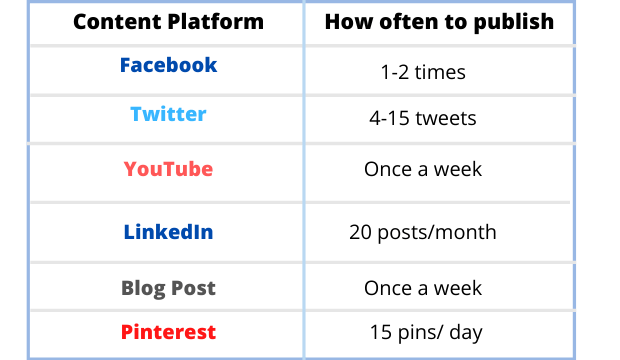
Final words
Content strategy is the heart of content marketing, and it starts with defining the marketing goal and objectives.
There is no such rule for having a documented content strategy, but it skyrockets your productivity and content management skills.
So my recommendation is to create a content strategy template to have a clear idea of what to work on next when to publish the next content, and so on.
That’s all for today.
In case if you have any queries or suggestions, please leave a message below.
That will motivate you to provide you more valuable content.

Sk Rafiqul Islam is a content marketing practitioner with 3+ years of practical experience. He spends most of his time helping businesses to build a loyal audience with content marketing. He is also running a tech career blog called 10Pie and content marketing VIP, a bi-weekly marketing newsletter. In his free time, he loves reading books and playing football.
